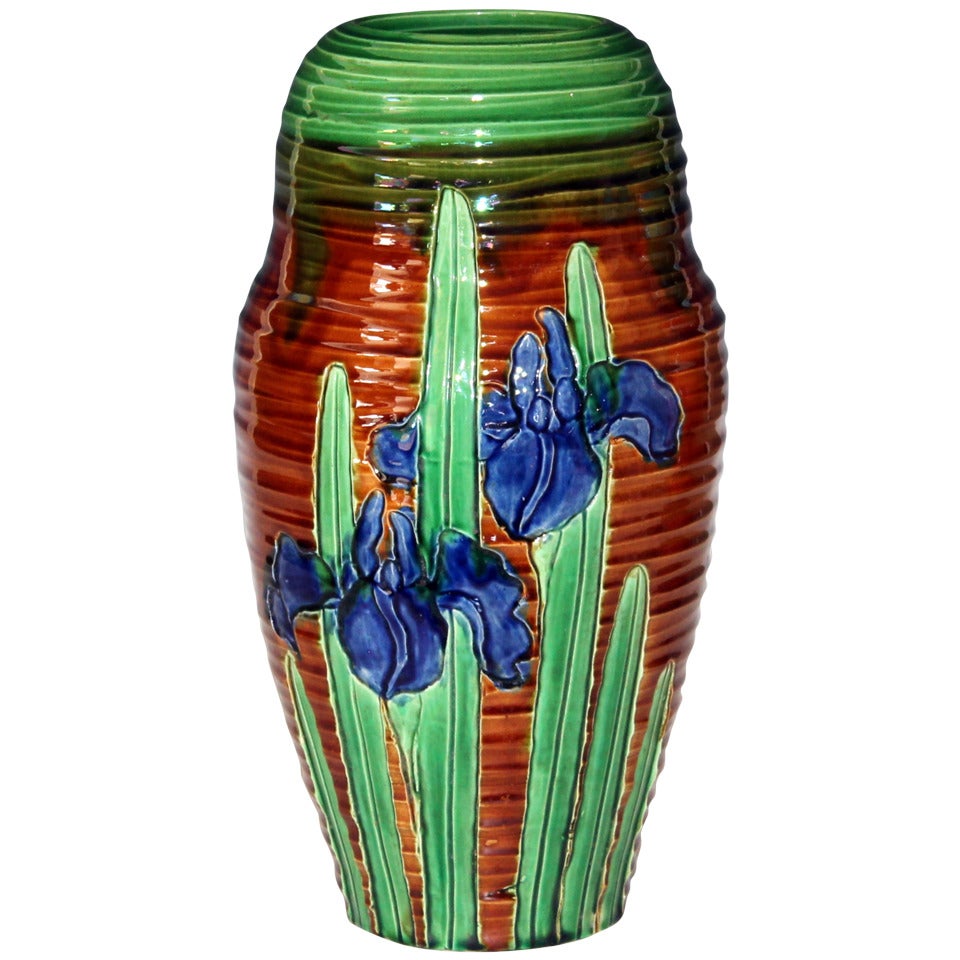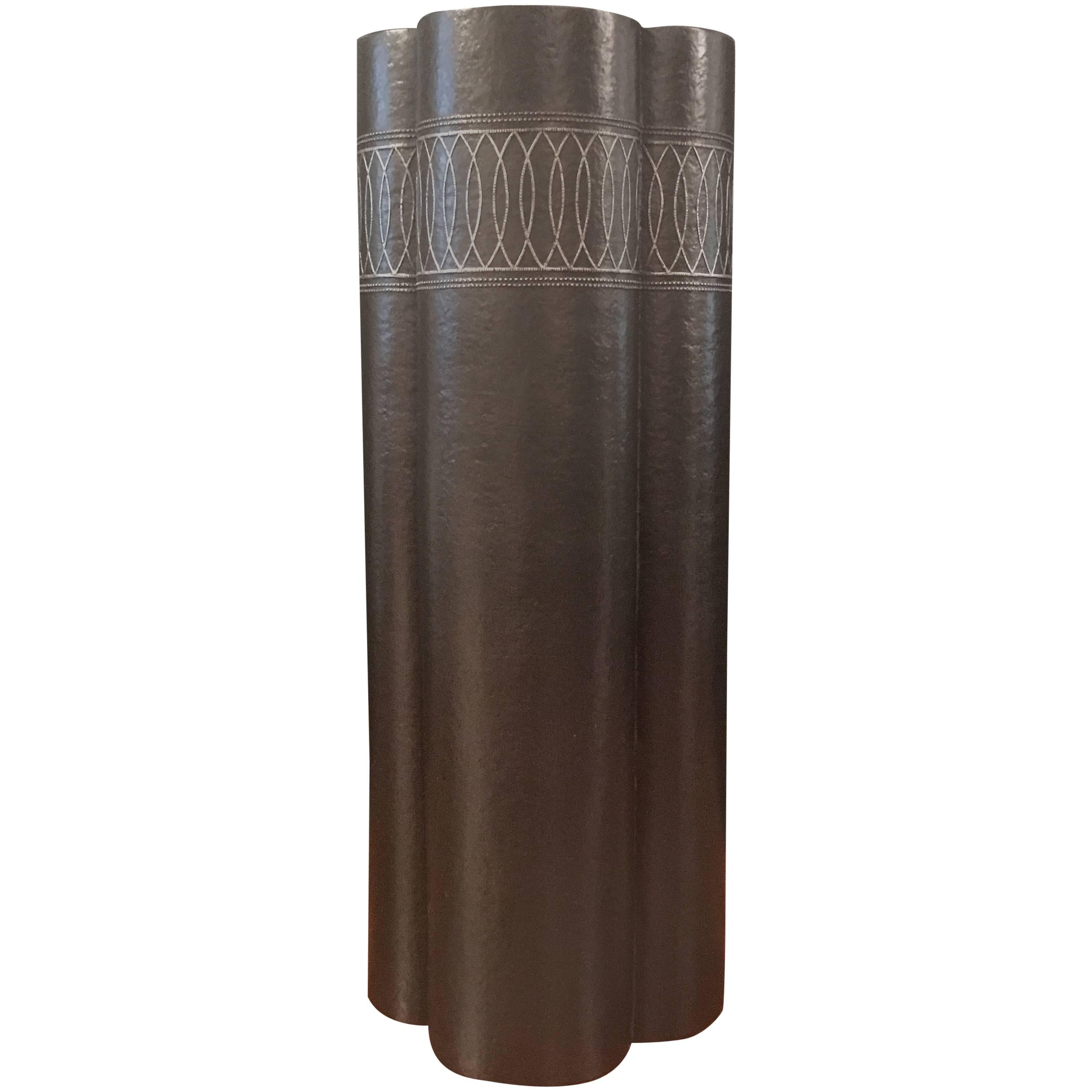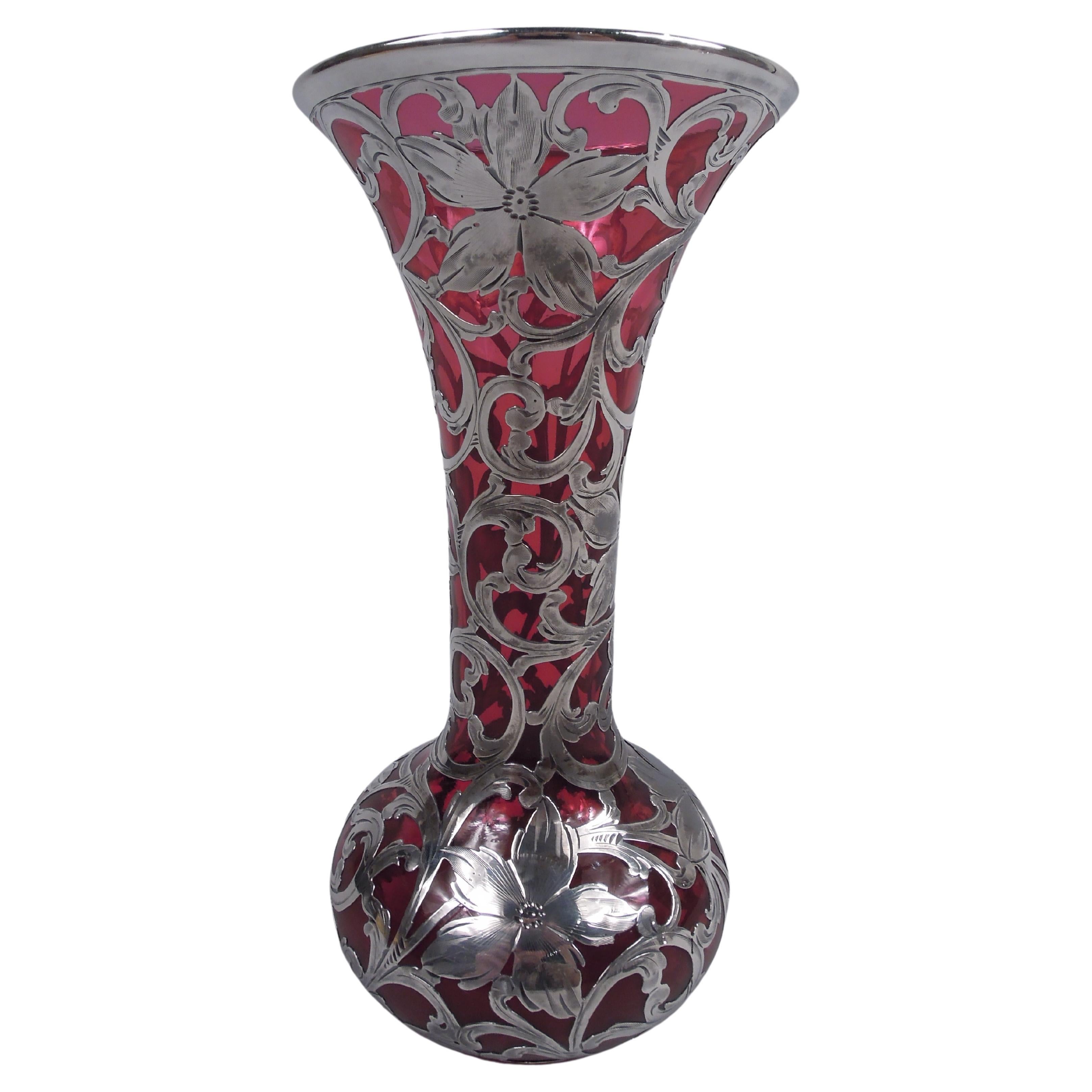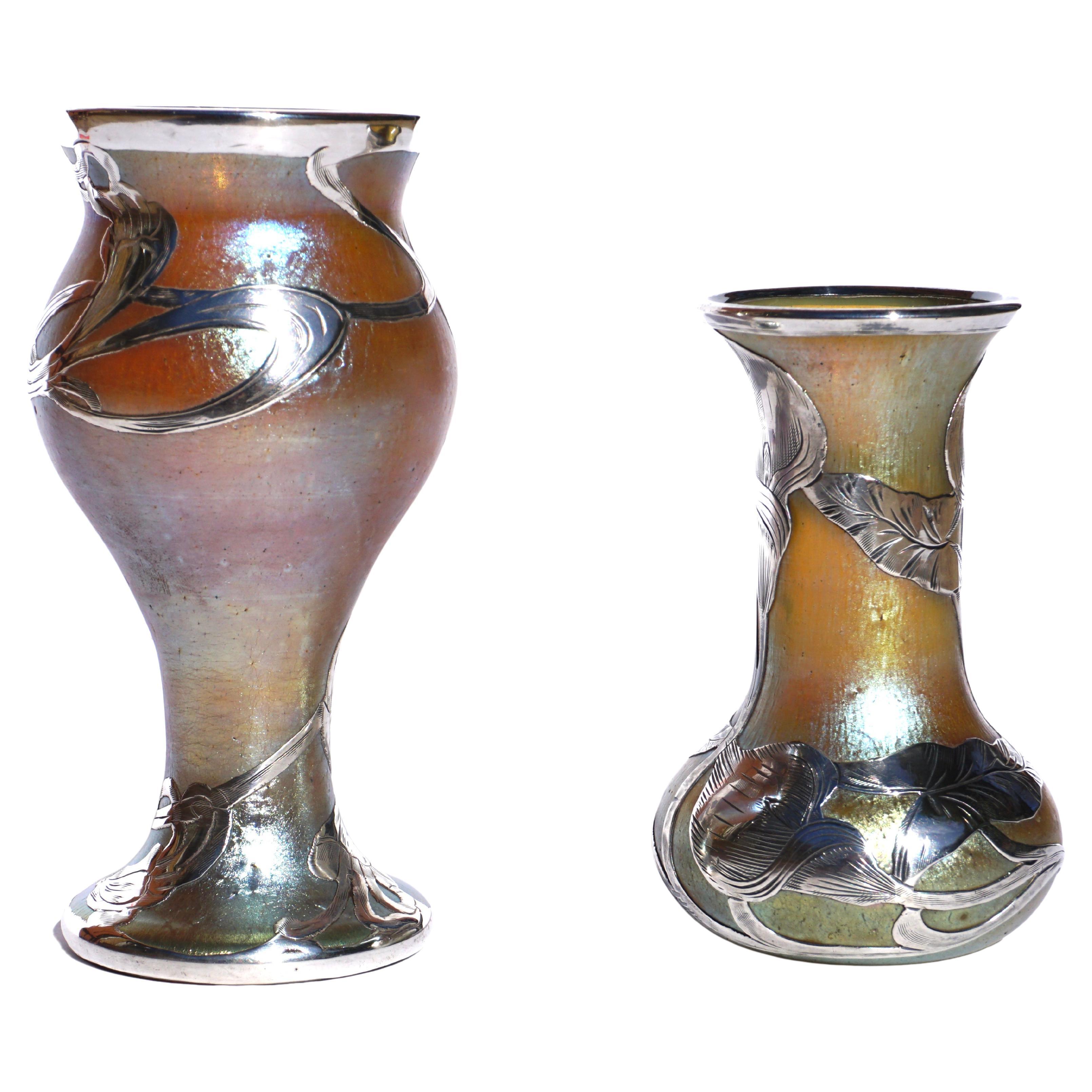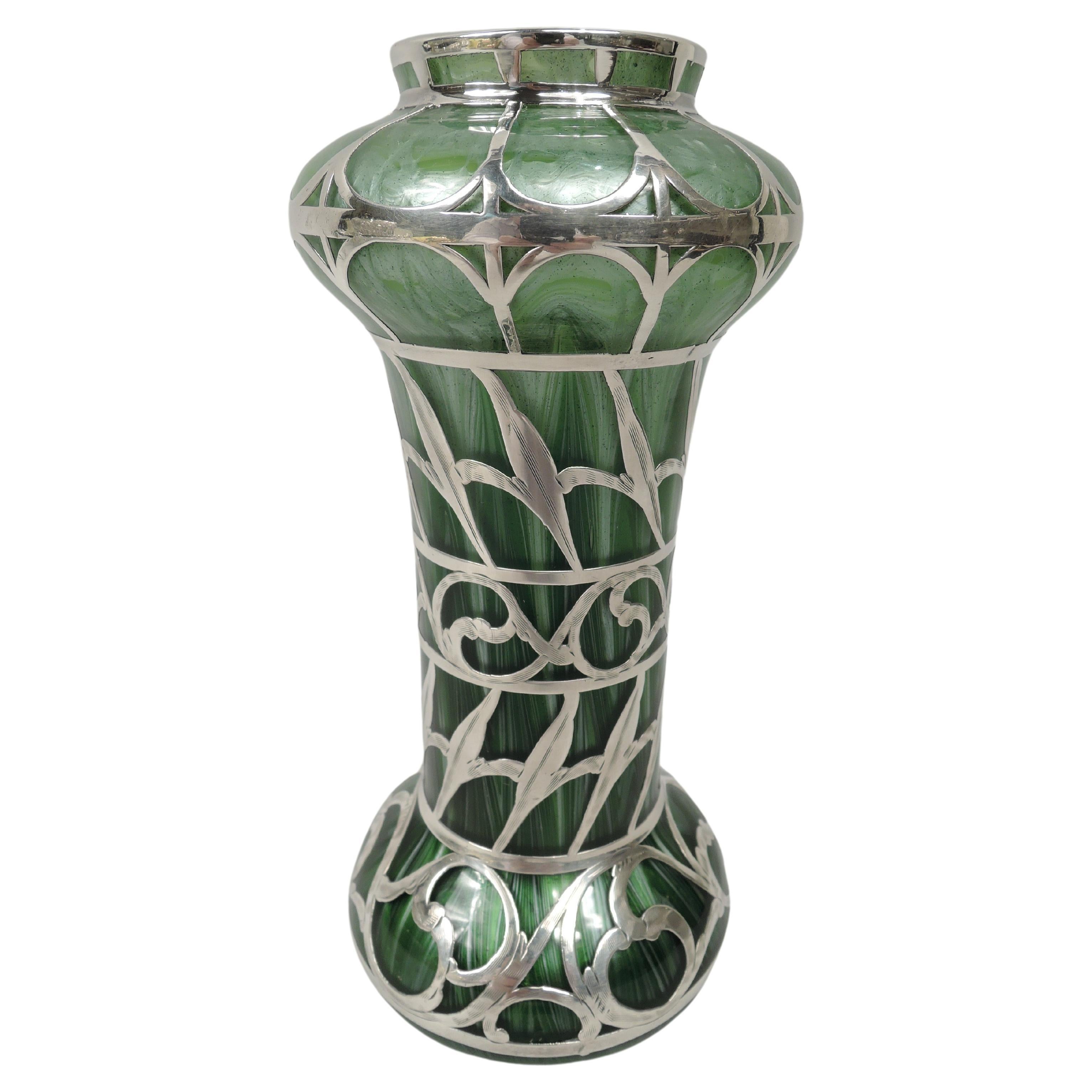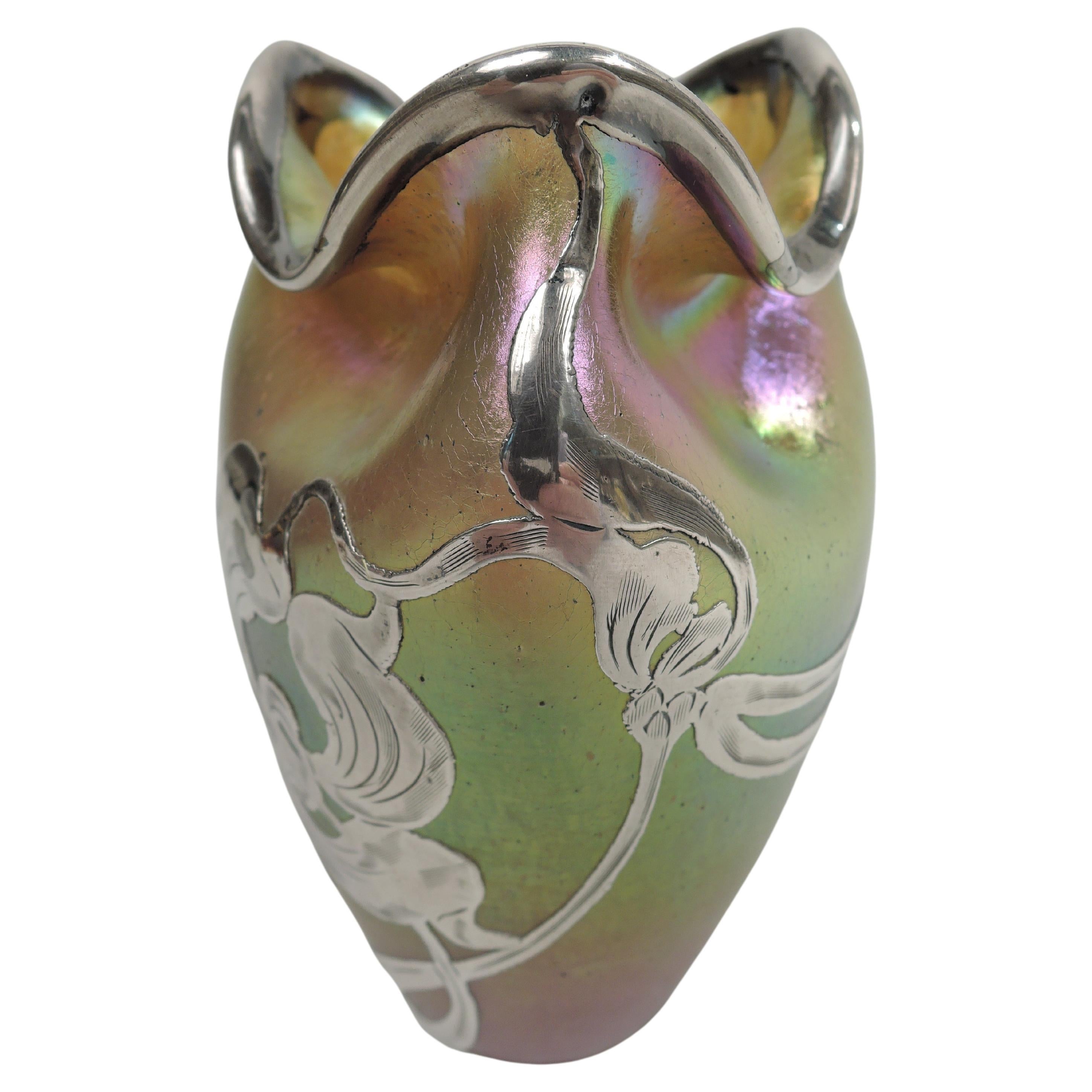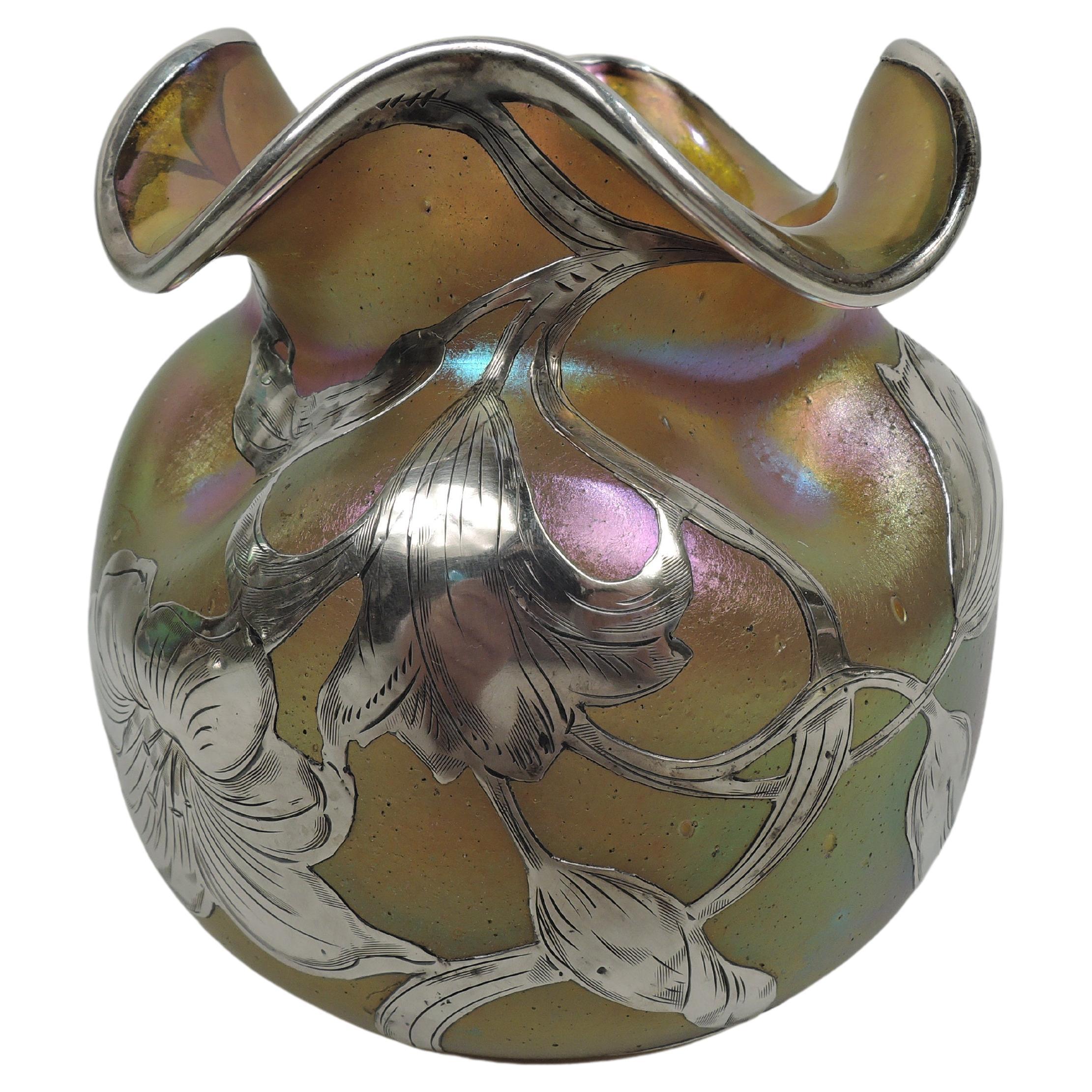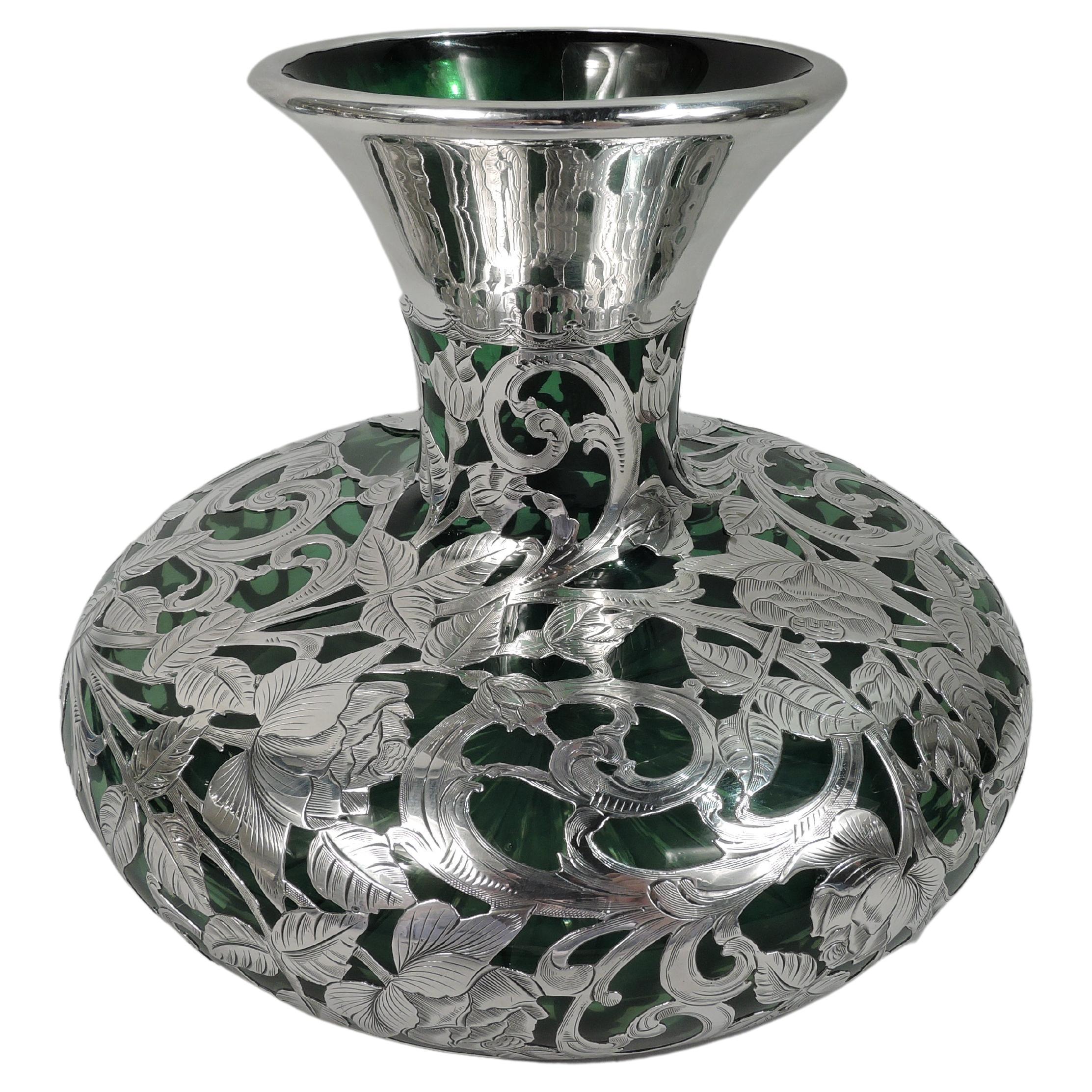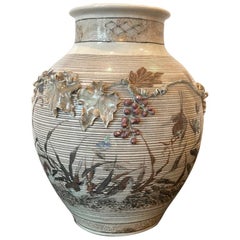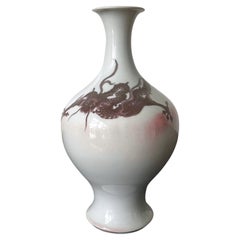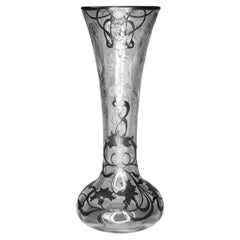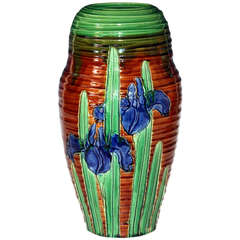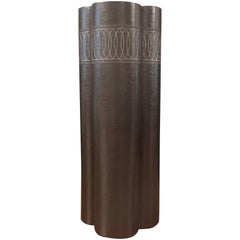
Art Nouveau Vase with Shreve & Co. Silver Overlay
View Similar Items
Want more images or videos?
Request additional images or videos from the seller
1 of 12
Art Nouveau Vase with Shreve & Co. Silver Overlay
About the Item
- Creator:Shreve & Co. (Maker)
- Dimensions:Height: 8.25 in (20.96 cm)Diameter: 5 in (12.7 cm)Length: 8.25 in (20.96 cm)
- Style:Art Nouveau (Of the Period)
- Materials and Techniques:
- Place of Origin:
- Period:
- Date of Manufacture:1910s
- Condition:Very good vintage minimum wear on surface.
- Seller Location:Atlanta, GA
- Reference Number:1stDibs: LU945013583512
About the Seller
5.0
Platinum Seller
These expertly vetted sellers are 1stDibs' most experienced sellers and are rated highest by our customers.
Established in 2006
1stDibs seller since 2010
480 sales on 1stDibs
More From This SellerView All
- Japanese Porcelain Vase with Relief Surface Makuzu KozanBy Makuzu KozanLocated in Atlanta, GAA rare porcelain vase by Makuzu Kozan (1842-1916) circa 1870-81 (late Meiji period). The vase is dated to the earlier work from Kozan's studio during his early period (Takauki-ware p...Category
Antique Late 19th Century Japanese Japonisme Ceramics
MaterialsCeramic
- Antique Korean Buncheong Ceramic Vase with Incised DesignsLocated in Atlanta, GAA Korean ceramic bottle form jar of Buncheong ware circa 15-16th century Joseon Dynasty. The surface of the jar features a celadon glaze and an elaborate incised design of large flor...Category
Antique 16th Century Korean Archaistic Ceramics
MaterialsCeramic
- Japanese Porcelain Glazed Vase with Dragon Design Mazuku KozanBy Makuzu KozanLocated in Atlanta, GAA porcelain vase with dragon design by Japanese imperial potter Makuzu Kozan (1842-1916), circa 1900s. The vase is made in what is considered early phase of his underglaze period during late Meiji era. In a classic baluster form, the surface of the vase was decorated with a slithering dragon in underglaze iron red circulating the exterior among pink clouds. The animated rendering of the dragon is fine and detailed, with five claws, scales, long tails and highlighted eyes. The pink cloud is misty and called Morotai or the hazy style, created with a unique technique developed in Kozan's studio called fuki-e by blowing the pigment powders onto the surface. Kozan Studio experimented with newly available colors from the west starting in the 1880s, which resulted in the expansion of the palette and style that bridged the east and west aesthetic tradition. Marked in underglaze blue on the base. Known also as Miyagawa Kozan...Category
Antique Early 1900s Japanese Japonisme Ceramics
MaterialsPorcelain
- Collection of Four Chinese Ceramic Vases with Peachbloom GlazeLocated in Atlanta, GAAn American Midwest collection of four small Chinese ceramic vases covered in peach-bloom glaze circa Qing Dynasty, 19th century, possibly earlier. The set consists of three vases of...Category
Antique 19th Century Chinese Qing Ceramics
MaterialsCeramic
- Fine Japanese Satsuma Vase with Superb Decoration by SeikozanLocated in Atlanta, GAA ceramic vase in tapered square form made by Japanese studio Seikozan circa 1890-1910s (late Meiji Period). One of the many artist studios that specialized in satsuma ware, Seikozan...Category
Antique 1880s Japanese Meiji Ceramics
MaterialsCeramic
- Antique Korean Buncheong Flat Bottle Vase with Incised DesignsLocated in Atlanta, GAA Korean Buncheong stoneware vase circa 15th century of Joseon Dynasty. The robust vase with thick walls was made in a bottle form with rounded square contour and flattened surfaces....Category
Antique 15th Century and Earlier Korean Archaistic Ceramics
MaterialsCeramic
You May Also Like
- Art Nouveau Silver Overlay Glass VaseLocated in New York, NYLovely Art Nouveau period glass vase with silver overlay depicting leafy foliage. Apparently unsigned. In very good condition.Category
Early 20th Century French Art Nouveau Vases
MaterialsSilver
- Awaji Pottery Art Nouveau Carved Iris VaseBy Awaji PotteryLocated in Wilton, CTAwaji Pottery vase with blooming irises carved into accentuated throw ribs. The blue and green irises set aglow against the warm brown ground. Measures: 12 1/2" high, 6 1/2" diameter...Category
Early 20th Century Japanese Art Nouveau Ceramics
MaterialsPottery
- Japanese Art Nouveau Bronze Lobed Vase with Silver OverlayLocated in Austin, TXAn attractive Japanese Art Nouveau silver overlaid bronze vase, late Meiji period, early 20th century, Japan. A tall and elegant bronze vase of q...Category
Vintage 1910s Japanese Art Nouveau Vases
MaterialsBronze, Silver
- Art Nouveau Loetz Iridescent Glass Vase with Silver OverlayBy Loetz GlassLocated in Buenos Aires, OlivosArt Nouveau glass vase with engraved silver overlay by historic Czech maker Loetz.Category
Early 20th Century Austrian Art Nouveau Vases
MaterialsSterling Silver
$1,800 Sale Price33% Off - Alvin Art Nouveau Red Silver Overlay VaseBy Alvin CorporationLocated in New York, NYArt Nouveau glass vase with engraved silver overlay. Made by Alvin Corp. in Providence, ca 1900. Conical mouth and neck, and bellied bowl. Overlay in form of dense leafing scrollwork...Category
Early 20th Century American Art Nouveau Vases
MaterialsSilver
- Loetz Silver Overlay Art Nouveau Vases PairBy Loetz GlassLocated in Dallas, TXLoetz Art Nouveau circa 1900 art glass vases with floral and decorative scroll Silver Overlay. (Pair) Larger: Corset form in iridescent gold glass decorated with scrolling silver overlay and a blank cartouche. Height: 5.25 X 2.75 Diameter Condition: Mint. Smaller: Bulbous smoke stack form in iridescent green-gold decorated with scrolling silver overlay flowers. Marked: Alvin pat 67 Height: 4.25 X 2,65 Diameter Condition: Mint AVANTIQUES is dedicated to providing an exclusive curated collection of Fine Arts, Paintings, Bronzes, Asian treasures, Art Glass and Antiques. Our inventory represents time-tested investment quality items with everlasting decorative beauty. We look forward to your business and appreciate any reasonable offers. All of our curated items are vetted and guaranteed authentic and as described. Avantiques only deals in original antiques and never reproductions. We stand behind our treasures with a full money back return if the items are not as described. In 1836, Johann Eisner established a glassworks in the Southern Bohemian town of Klostermühle, today part of the Czech Republic and called Klášterský Mlýn. His heirs sold the glassworks to Martin Schmid in 1849, and two years later Schmid sold it to Frank Gerstner, attorney-at-law, and his wife Susanne. Susanne was the widow (‘Witwe’ in German) of Johann Loetz, a glassmaker about whom we know very little. Gerstner transferred sole ownership to Susanne shortly before his death in 1855, and she successfully led and expanded the company during the subsequent 20 years, manufacturing mainly crystal, overlay and painted glass. In 1879, Susanne transferred the company – now called ‘Johann Loetz Witwe’ – to Maximilian von Spaun, the son of her daughter Karoline. One year later, von Spaun hired Eduard Prochaska and the two of them modernized the factory and introduced new, patented techniques and processes. The first fruits of this collaboration were exciting innovations in Historicism glass, including Intarsia and Octopus glass and the very popular marbled (‘marmorisierte’) glass which imitated semi-precious stones like red chalcedony, onyx and malachite. Success at exhibitions in Brussels, Munich and Vienna were crowned by awards at the Paris World’s Exposition in 1889. In 1897, von Spaun first saw Tiffany Favrile glass exhibited in Bohemia and Vienna, and this convinced him that the art nouveau style was also the way to go for Loetz Witwe. The next eight years were to be the most artistically significant and profitable period in the entire history of the company. The Art Nouveau Period –The glassworks created large numbers of its own new designs of iridescent, trailing art nouveau glass, sometimes in collaboration with well-known artists and designers like Marie Kirschner and Franz Hofstötter (aka Franz Hofstätter). The zenith of Loetz art nouveau glass was epitomized by the so-called Phänomen series of designs, much of it designed by Hofstötter, which won a Grand Prix (alongside Tiffany, Gallé, Daum and Lobmeyr) at the Paris World’s Exposition in 1900. The company’s success during this period had two prime drivers – the technical expertise of Prochaska and the business acumen of von Spaun. Loetz Witwe created many of its own designs, and also supplied glass commissioned by major customers like E. Bakolowits (Vienna) and Max Emanuel...Category
Antique Early 1900s Austrian Art Nouveau Vases
MaterialsArt Glass
Recently Viewed
View AllMore Ways To Browse
Peacock Art Nouveau
Art Nouveau Silver Overlay Vase
Shreve Co
Shreve And Co
Sterling Overlay Vase
Sterling Silver Overlay Vase
Silver Overlay Porcelain
Turquoise Peacock
Peacock Blue Ceramic
Shreve San Francisco
Shreve And Co San Francisco
Shreve Co San Francisco
Nouveau Silver Peacock
Japanese Vase Peacocks
Japanese Vase Peacock
Sterling Silver Overlay Porcelain
Shreve And Company San Francisco
Shreve And Co Vase

